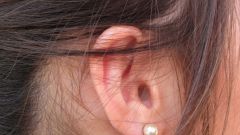Chronic sinusitis
Sinusitis is the inflammation of the mucous membrane in the frontal sinuses. There are two forms of the disease: catarrhal and suppurative, in which pus accumulated inside the initiating infection and causing breathing difficulties. Also, the disease can be divided into unilateral or bilateral sinusitis, depending on the localization of the disease.
Acute sinusitis is characterized by increased tenderness when pressing on the supraorbital ridge or brow. The pain also may radiate to the eye area, causing the sensation of pressure and burning sensation.
The disease has an intermittent character and its exacerbation often alternating with temporary remissions.
Diagnosis and treatment
For diagnosis the patient is assigned x-ray examination of frontal sinuses. After examining the patient the doctor prescribes treatment in accordance with the severity of symptoms and the number of the accumulated mucus.
Treatment of rhinosinusitis (sinusitis, rhinitis and sinusitis) is complex under the supervision of a doctor.
If untreated, the disease takes a protracted nature and may cause partial or even complete loss of smell. This can hurt not only eyebrows, but also the paranasal sinuses. Because of what is happening purulent processes may have an unpleasant smell from the nose that is characteristic of suppurative disease.
Can also occur meningitis - swelling of the meninges. The disease can be fatal if untreated or have a serious impact on human health in the future, causing severe neurologic symptoms and complications. In severe cases of sinusitis also occurs and phlebitis, causing sepsis, which is no less dangerous because of the high probability of fatal outcome in untimely delivery of medical care.
In Indian traditional medicine, the pain in the superciliary arches is an indicator of presence of inflammatory processes in the stomach.
When the symptom of pain after clicking on eyebrows should contact a doctor for advice. Typically, rhinosinusitis treated in an outpatient setting. It is necessary to provide outflow of pus from the sinuses to block further inflammation and destruction of pathogenic environment with accurate prescribing of various medications. Antibiotics, antipyretics, vitamins, vasoconstrictor drops (to improve patency), nasal lavage cuckoo, and in some cases puncture (puncture) of the sinuses. In particularly severe cases, the patient may be hospitalized in the ENT Department.


